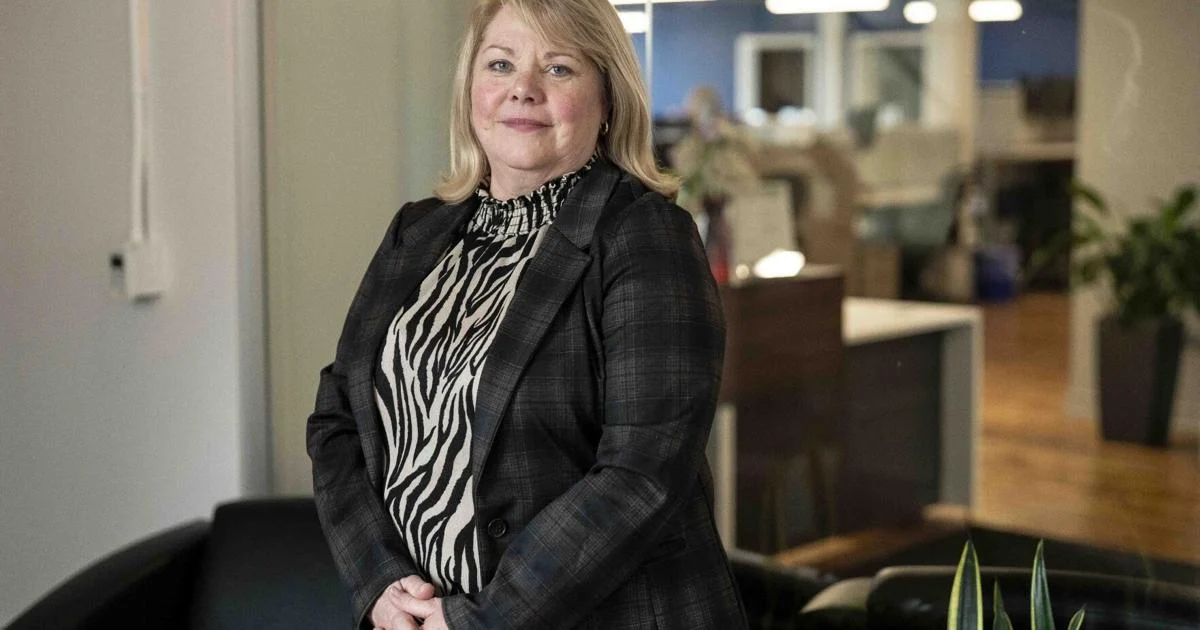
The Buffalo Niagara Partnership is preparing for a leadership change.
Dottie Gallagher, who has led the region’s largest business group since 2013, will retire in June 2026. More immediately, she is giving up the president’s duties while remaining CEO.
Grant Loomis, the chief operating officer, is adding the duties of president. He will become CEO upon Gallagher’s retirement.
As head of the Partnership, Gallagher oversees a business group consisting of 1,200 member companies. The group advocates for business-friendly legislation, focuses on issues like workforce development, and brings members together for networking and meetings.
Gallagher succeeded Andrew Rudnick as the Partnership’s leader more than 12 years ago. She had led the tourism agency Visit Buffalo Niagara for three years. Prior to that, Gallagher was a marketing executive at The Buffalo News.
Loomis has expanded his role at the Partnership since joining in 2015.
“I am honored, I’m humbled, I’m deeply appreciative and I’m excited and ready to go,” Loomis said.
In 2021, when Gallagher signed a five-year contract, she notified the Partnership’s executive committee that she intended to retire at the end of that contract. Loomis was identified as an internal candidate to succeed her.
“The board wanted to see him take on successive responsibility,” Gallagher said. At the time, Loomis was the Partnership’s vice president for governmental affairs, working on advocacy issues. He went on handle supervision of the Partnership’s workforce, and oversight of the Partnership’s equity work. In 2024, he was promoted to chief operating officer.
Loomis said taking on those other roles has given him a broader view of the Partnership’s operations.
“It’s really been ideal training to be able to be actively engaged in everything the organization does,” he said.
Last April, the 25-member executive committee discussed whether to move forward with Loomis as Gallagher’s successor or to launch a search process for additional candidates.
“It was a lot of really robust discussion, but Grant has risen to every challenge that he’s been given,” Gallagher said. Loomis emerged as the choice.
“His deep experience, dedication and strategic vision position him well to guide the (Partnership) at this pivotal time, as our region seizes new opportunities for economic growth,” said Tom Emmerling, chair of the Board of Directors.
Emmerling praised Gallagher for her “extraordinary leadership and commitment. She has positioned the Buffalo Niagara Partnership for continued success, and Grant is ready to carry that work forward.”
Gallagher said the Partnership is making the announcement now, instead of closer to her retirement date next year, because “it’s becoming Western New York’s worst-kept secret.” Over the next several months, she will work on supporting the transition of the Partnership’s major relationships and mentoring the organization’s new vice president of revenue.
As the leadership transition unfolds, Loomis said he wants to build upon Gallagher’s work at the Partnership.
“I think the BNP is more relevant today than we ever have been,” he said. “I see my job moving forward as making sure the BNP becomes even more relevant and that we grow as an organization as our region grows.”
Here are some of the key issues the Partnership is dealing with as the transition unfolds:
Economic vitality
Loomis said amid successes, the region won’t achieve its full potential without tackling issues of poverty, particularly in the City of Buffalo.
“There are currently far too many people sitting on the sidelines because they are weighed down the burden of poverty in all of the forms that takes,” he said. “Bringing those people into the economic fold is our best opportunity for growth.”
The Partnership has spotlighted the “benefits cliff,” in which workers risk losing eligibility for certain public assistance benefits if their income rises to a certain level. And that higher income might not be enough to cover the lost benefits, leaving workers in a financial hole. It can keep some people out of the workforce, or lead them to reject promotions.
“What we were trying to figure out is, what are the structural barriers for getting the people and the talent that we need?” Gallagher said. “When you look at this region, we have incredible poverty and quite frankly, we’ve had a lack of equity in our community.”
The benefits cliff creates an impediment to employers getting the workers they need and for workers to build wealth, she said.
Focus on tech hub
Gallagher has been a prominent part of an effort involving Buffalo, Rochester and Syracuse to develop a semiconductor corridor across New York State. The three regions, in a joint bid, were awarded $40 million in federal funds to create a “tech hub” to support development of that sector. The state has supplemented the effort with $8 million in funding.
Gallagher sees the tech hub as not only an opportunity to tap into the potential of the semiconductor sector, but an example of how upstate New York regions can collaborate on economic development.
Downtown revitalization
The Partnership has moved its offices into the Cobblestone District. The organization wants to bring more people downtown for activities and to use the Partnership’s offices. Starting in October, the Partnership’s workforce is going back to five days a week in the office.
“We have to lead by example here, at a time where local businesses need bodies to be living and working downtown,” she said. The Partnership has 17 employees and expects to add a few staffers in the near future.
Loomis said there needs to be a “shared commitment across both the public and private sectors” to recapture momentum happening downtown before the pandemic hit in 2020.
New energy policies
As New York pushes for greater electrification, business groups have called for an “all of the above” approach that keeps fossil fuels such as natural gas in the mix, to meet rising energy needs.
“We support cleaner energy, but we’re in a situation now where we’re taking more power off the grid while demand is already growing, not even in forecasting future growth,” Gallagher said.
Loomis said it’s an issue crucial to the state’s economic vitality, amid debate over the best path forward.
“You can raise legitimate, objective questions about the state’s plan and what that means for energy affordability and reliability, and not be a climate denier,” he said.
The business news you need
Get the latest local business news delivered FREE to your inbox weekly.
* I understand and agree that registration on or use of this site constitutes agreement to its user agreement and privacy policy.
Matt Glynn
Reporter
Get email notifications on {{subject}} daily!
Your notification has been saved.
There was a problem saving your notification.
{{description}}
Email notifications are only sent once a day, and only if there are new matching items.
Followed notifications
Please log in to use this feature
Log In
Don’t have an account? Sign Up Today



